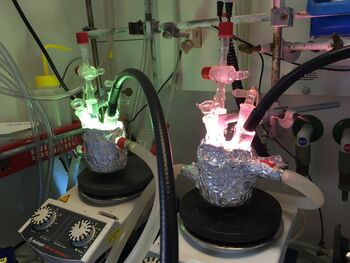Have any questions?
+44 1234 567 890
M. Sc. Hilario Diego Huerto Zerón
Leibniz Institute for Catalysis
Albert-Einstein-Str. 29a
18059 Rostock
Email: Hilario.Huerta@catalysis. de
Phone: +49 381 1281-230
Currently developing efficient systems for photocatalytic CO2 reduction as a PhD student. I am in constant learning, compromised with the environment, capable of managing any type of project. I consider myself as an active person, efficiently handling a lot of responsibilities, always willing to help, with the final purpose of generating knowledge and promote its development.
Education
2020-Today PhD (Applied homogeneous catalysis), Leibniz Institute for Catalysis, Rostock University, Germany.
2016-2019 M. Sc. (Organometallic Chemistry), Chemistry Institute, UNAM, México. GPA: 9.38/10.0
M. Sc. Thesis: “Synthesis of new [P,N] ligands with a thiazoline fragment and their application in asymmetric transfer hydrogenation”
2012-2016 B. S. (Organic Chemistry), School of Chemistry. UNAM. GPA: 8.84/10.0
B. S. Thesis: “New synthetic strategy for obtention of enantiopure 2-ferrocenyloxazolines”
Grants and fellowships
• National Scholarship CONACYT, 2016 -2018.
• High Performance Graduate Program UNAM, 2015-2016.
• High Academic Lever UNAM, 2012-2016.

Project
The use of heteroleptic copper (I) photosensitizers has been studied thoroughly and applied in proton photocatalytic reduction,1 furthermore, photosensitizer-titanium dioxide composites have shown a positive outcome for this transformation.2 Application of PS-TiO2 composites has shown positive results reducing amounts of catalyst and photosensitizer achieving higher TON values than the homogeneous systems. An ongoing collaboration with Greifswald INP focuses on coverage of these heterogeneous materials using plasma techniques.


Development of an artificial metalloenzyme based on iron cyclopentadienone complexes is currently in progress. Collaboration with Greifswald University regarding this topic is ongoing. Maleimide moiety was incorporated to the iron complex for further binding to the enzyme; resulting artificial metalloenzyme will be tested in photocatalytic CO2 reduction.
[1] Angew. Chem. 2013, 125, 437
[2] ChemCatChem. 2014, 6, 82

Motivation
"What I like about the ComBioCat campus is the possibility to cooperate between research groups and learn new things in this process."
© Photo Diego Huerta